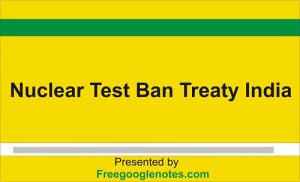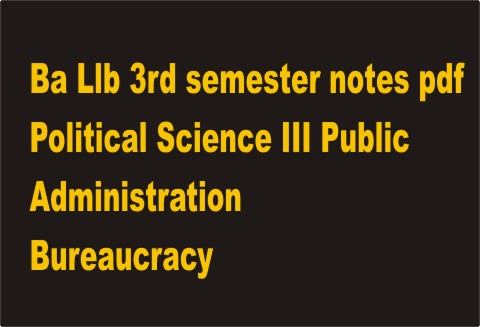Table of Contents
International Relations Theory
In the below post you will read
International Relations Theory
on
Nuclear Test Ban Treaty India
complete explanation for you.
you can follow @blogger_priya
or you may also read:-

Q. 2. What is India’s reaction on Nuclear test ban treaty expłained it?
Ans. Nuclear Test Ban Treaty India
The first atomic device was tested by the United States of America on July 16, 1945. For the first time, energy equal to that released by 20,000 tons of the conventional explosive was released by fissioning the nuclei of plutonium of the plutonium in an instantaneous chain reaction. Three weeks later US dropped an atom bomb at Hiroshima and three days afterward. another similar bomb was dropped at Nagasaki. The unprecedented destruction caused by the two bombs forced Japan’s unconditional surrender. The former Soviet Union took the US action
as a challenge. As the Cold War commenced, the USSR got busy developing its own atom bomb. The US monopoly was ended when USSR exploded an atomic device in 1949. Britain (1952), France (1960), and China (1964) also joined the two Super Powers to constitute the exclusive Nuclear Club. Till 1995, a total of 2068 tests had been conducted India has been against the manufacture, testing, and indeed possession
of nuclear weapons.
Mankind was horror-stricken when the first two bombs were dropped on two. Japanese cities. The dangers of radio-active fall-out Were highlighted when an American nuclear test of 15 megaton hydrogen bomb was conducted on March 1, 1954, at the Namu Island. The test was a part of nuclear tests called “Operation Castle” official statements confirmed the radioactive contamination of 28 Americans and 236 residents of nearby Marshall Island. The crew of a Japanese fishing boat was exposed to high radiation. This panicked the people when the highly contaminated boat returned to the harbor. This led the world to think of asking for a ban on such tests in the future.
India was the first country to officially ask for a stoppage of nuclear tests. Prime minister Nehru told the Parliament in April 1954. “Nuclear tests a crime against humanity and a crime against the survival of the human race. No country pleading the interest of its security has the right to perpetuate this nuclear holocaust.” Nehru proposed an immediate “standstill agreement” on nuclear testing. The nuclear explosions are “the most visible manifestation of the arms race”, and can lead to inıpeding nuclear testing in the U.N. General Assembly in December 1954, but did not put its vote. However, India’s proposal to establish a SCientific committee to enquire into the effects of radiation was unanimously adopted by the General Assembly.
The Nuclear Weapon States (NWS) had their arguments for the justification of nuclear testing States (NWS) had there were needed to determine the effectiveness and reliability of weapons that were developed and stockpiled. Secondly, they test weapons to keep an edge on their adversaries. Thirdly, some of them were also conducted to evaluate the effects of nuclear explosions. Lastly, it was argued that nuclear testing was essential to ensure the safety of the weapons already developed.
There are various reasons why the international community wanted a ban on nuclear tests. As stated above, the contamination caused by the US test of March 1954 and the death of a Japanese crew member caught public attention, and concern of the people became widespread. Asian countries were the main victims of óf nuclear testing. This led Nehru to demand the immediate cessation of tests. The main reason for the demand for Comprehensive Test Ban (CTB) was; (a) to curb the nuclear arms race by stopping the immediate both horizontal and vertical proliferation of nuclear weapons;
(b) to check environmental hazard; and
(c) to promote
socio-economic well-being of mankind. As Sri Lanka asserted in 1991 in Partial lest Treaty Amendment Conference that: ‘lt is against all civilized standards and moral convictions that billions of people are deprived of basic needs such as food, clothing, shelter, care, etc. and other things that are fundamental to a dignified life, while the international community is spending billions of dollars for destructive-purposes.’
The formal proposal made by India in the UN General Assembly in December 1954 was not followed by immediate action. The formal negotiations for the test ban were initiated when Soviet Prime Minister Bulganin proposed the cessation of nuclear testing in October 1956 but rejected the Idea of international verification of compliance. The United States, on the other hand, considered international verification as an essential condition, several other proposals followed. For example, in January 1957 the United States presented a five-point plan calling for the assertion of the production of nuclear weapons, to be followed by nuclear testing as well. After the first thermonuclear device was tested by Britain in May 1957, it opposed the test ban on the ground that it had a very small stockpile of hydrogen bombs and it wanted to further develop the weapons. France was still busy developing its
bomb.

Partial Test Ban Treaty, 1963-The direct negotiations for the test ban were speeded up after the Cuban crisis. A US-USSR hotline wvas established and a meeting on the test ban was held in Moscow. The meeting negotiated a Partial Test Ban Treaty (PTBT) which was signed by the Foreign Minister of the UK, the USA, and USSR on August 5, 1963. lt came into force on October 10, 1963. The treaty prohibited all nuclear weapon test explosions on the surface, in the atmosphere, and underwater including territorial waters and high seas. Ilt prohibited all tests, including tests for peaceful nuclear explosives (PNEs), at a place under the jurisdiction of a party to this treaty in the following environment: “The atmosphere, beyond its limits including outer space, or underwater including territorial waters and high seas.” The treaty specifically mentioned to ensure were not prohibited. High seas were specifically mentioned to ensure that these seas are not within the jurisdiction of any state. Although underground tests were allowed, yet those tests that could cause “radioactive debris” to be present outside the territorial limit of the state under whose jurisdiction or control such explosions Were conducted were prohibited.
All states were invited to join the treaty, which is of unlimited duration. In extraordinary events, a śtate, which has signed the treaty became a party to it, was given the right to withdraw. The treaty could be amended by the affirmative vote of a majority of parties, including the affirmative vote of the three original parties; i.e. U.K. U.S.A.and USSR Thus, it represented the “First global agreement to protect the environment. The PTBT sought to achieve the discontinuance of all test explosions of nuclear weapons for all time. It paved the way for negotiations for more effective arms control measures. The treaty was ratified by three original signatories (parties to PTBT), 98 other members of the United Nations including India, and seven non-members States of the UN.
The Nuclear Non-proliferation Treaty, 1968-The Partial Test Ban Treaty sought to solve the most. urgent environment problem., But, the problem of the qualitative nuclear arms race and the danger of nuclear proliferation remained. The growing worldwide interest in nuclear power caused the danger of nuclear proliferation. Many countries including India were interested only in nuclear energy for peaceful purposes. But, the problem was that the line between energy for peaceful purposes and nuclear arms manufacture was very thin. Therefore, public pressure was built for a ban on nuclear proliferation. According to a report published in 1967, besides five nuclear weapons states (NWS), there were seven other states which were engaged in research for nuclear energy for peaceful purpose, but they could easily develop nuclear armaments also. Hence, it was necessary to curb the further proliferation of nuclear weapons. Therefore, the United States and the Soviet Union negotiated a treaty for the cessation of nuclear proliferation. Two separate, though identical treaties were proposed by the US and USSR in the UN General Assembly. The General Assembly increased the US-USSR proposal by a big majority on June 12, 1968. It was opened Non-Proliferation Treaty (NPT) was immediately signed by UK-USA, USSR and over 50 other countries. India refused to sign the treaty on the ground that it was discriminatory in nature. While it seeks to deny the freedom to non-nuclear-weapon states (NNWS) to acquire nuclear
weapons, it does not ask nuclear weapon states to destroy their armaments. Even France and China delayed their signatures for many years. China signed it as late as in 1992. Earlier, after ratification formalities, the NPT had come into force on March 5, 1970.
The NPT was initially to last for 25 years. After that, a conference of parties to the nonproliferation treaty was convened to extend it for a limited or unlimited period. The conference for the extension of NPT was held in 1995, and after prolonged negotiations, the treaty was extended for an indefinite period. India, not being a party to the NPT, did not attend the conference.
The NPT provided that none of the nuclear-weapon states (NWS), either individually or collectively would transfer their nuclear weapons to any of the non-nuclear-weapon states. The countries who signed this treaty are bound to discourage the nuclear arms race and will make it effective for nuclear dişarmament. If the national interest of any party is adversely affected, then it has the freedom to withdraw from the NPT.
The Threshold Test Ban Treaty (TTBT), 1974 – The Threshold Test Ban Treaty. was agreed upon by the two Super Powers just after five weeks of negotiations. This US-USSR bilateral treaty was signed on July 3, 1974. But, it could not come into force till December 1990. Its enforcement was delayed because the United States wanted a clearly spelled out verification arrangement. The treaty required the two signatories “to prevent and not to carry out underground nuclear weapon tests having a yield exceeding 150 kilotons.” It was also agreed to limit the underground nuclear tests to the bare minimum and to continue negotiations for the cessation of all nuclear weapon tests. The provisions of the treaty did not apply to underground explosions for peaceful purposes. The treaty did have a verification provision, but the US insisted that it would ratify the treaty only if there was a clear provision to ensure that the 150 kiloton threshold was actually observed.
The Peaceful Nuclear Explosion Treaty (PNET), 1976 – The provisions of TTBT did not extend to nuclear explosions for peace. This left a possibility that in the name of explosion for the peaceful purpose the states could circumvent the threshold limit for military purposes and test nuclear weapons of higher than 150 kilotons. Therefore, to plug this loophole the two Super Powers signed a supplementary agreement called the peaceful Nuclear Explosions Treaty (PNET) on May 28, 1976. The PNET extended the 150 kiloton threshold /to the explosion for peace also. In this case, also the US desired a clear verification protocol. Therefore, PNET could not come into force till December 1990 when the new protocol was agreed upon by the US and USSR.
The Comprehensive Test Ban Treaty (1996) – The Partial Test Ban Treaty of 1963 and subsequent agreements did not ban nuclear
The Conference on Disarmament (CD) whose origin can be traced back to the 1960s became active in Geneva in the 1980s. “The Eighteen Nations Disarmament Committee (ENDC) which was convened in 1962 and which had India as one of the members was recognized as Conference of the Committee on Disarmament. In 1978, the first Special session of the UN General Assembly on Disarmament recommended the setting up of a Committee on Disarmament, which was later renamed as Conference on Disarmament (CD). India has been an active member of CD and consistently advocated non-discriminatory nuclear disarmament and arms control. The CTBT negotiations came on the center-stage during Reagan-Gorbachev Summit at Reykjavik (Iceland) in 1986.
After many years of debate, it was decided in 1990 to convince a conference of states which were parties to the PTBT to consider amendments to the Treaty. The proposal was to convert the Treaty into a comprehensive test ban agreement. The conference of states that are parties to PTBT met a UN headquarters from January 7 to 18, 1991, However, it failed to reach any decision.
India’s position had been repeatedly made clear to various forms. India believes in total nuclear disarmament, but it opposes any agreement that is discriminatory in nature. India’s stand on CTBT is discussed in the next section in this chapter.
The negotiations for CTBT were taken up seriously in the Conference on Disarmament (CD) at Geneva during 1993-96. It is an irony that India who sought a nuclear test ban as early as 1954, could -not agree to the Comprehensive Test Ban Treaty as it finally emerged in 1996. India stands for total nuclear disarmament, whereas America worked for a ban on nuclear testing even at the underground level which was permitted by the PTBT But, the United States which was earlier not enthusiastic about CTBT decided to work seriously for a CTBT to be concluded by 1996. India and the United States became co-sponsors of a resolution adopted by the General Assembly in 1993. It called for a comprehensive test ban treaty which would “effectively
contribute” to the twin goal of nuclear non-proliferation in all aspects as well as the process the nuclear disarmament. The negotiating mandate adopted by the Geneva Conference on Disarmament also used the same language of twin objectives. President Clinton of the US and India’s Prime Minister PV. Narasimha Rao had together called for a CTBT with the twin objectives in 1994, But,by the Nuclear Weapon States changed their stand and began advocating non-proliferation rather than total nuclear disarmament. By that time the United States had developed sufficient laboratory facilities to continue to develop its nuclear weapons by laboratory testing while ensuring that non-nuclear-weapon states would not acquire the nuclear weapons.
During the negotiations in CD India had repeatedly made it clear that it would not sign any treaty that did not meet the twin objectives of the negotiating mandate. The CD leadership tried to coerce India by laying down that CTBT would enter into force when signed by all the 44 nuclear weapon capability states. These include five nuclear weapons states, three threshold countries (India, Pakistan, and Israel), and the remaining countries having capabilities of developing nuclear energy. India regarded this condition as arms twisting which was finally resented and India refused to sign the CTBT not only in the CD but also after the UN General Assembly adopted it on an Australian resolution by an overwhelming majority.
According to Jasjit Singh – “The treaty will allow sub-critical tests and computer simulation to design, fabricate and test new types of warheads.” He adds, “The treaty, will, in reality, legitimize a new qualities arms race.” There is no ban on the transfer of proven nuclear weapon design and technology by a nuclear weapon state to another state. The treaty clearly discriminates against non-nuclear-weapon states like India. As Jasjit Singh concludes. this trëaty, like the NPT, will be a license to proliferate vertically without effectively banning horizontal proliferation.” Thus, while the NWS can continue to develop new weapons and even transfer these to others. states, nothing it done by the treaty to initiate the process of disarmament.
India’s Objections and Rejection of CTBT-Despite India’s strong objection the CTBT was pushed through, though India refused to sing it. The position taken by the Indian Government had wide public support. The CTBT directly affects five nuclear weapons states and three threshold states. The remaining non-nuclear-weapon states (NNWS) arc committed under the NPT to indefinitely abstain from


